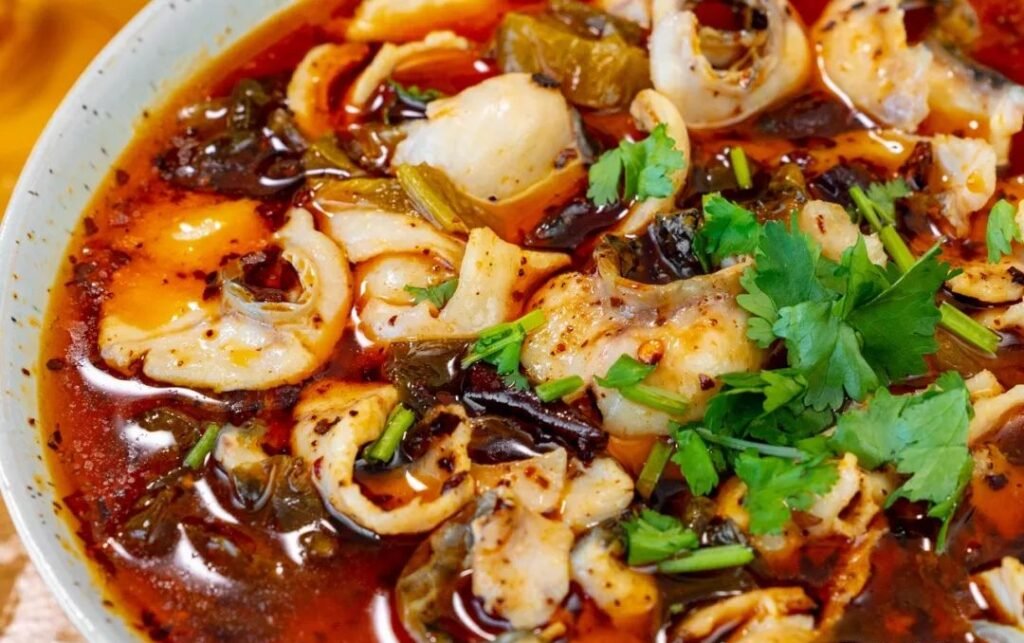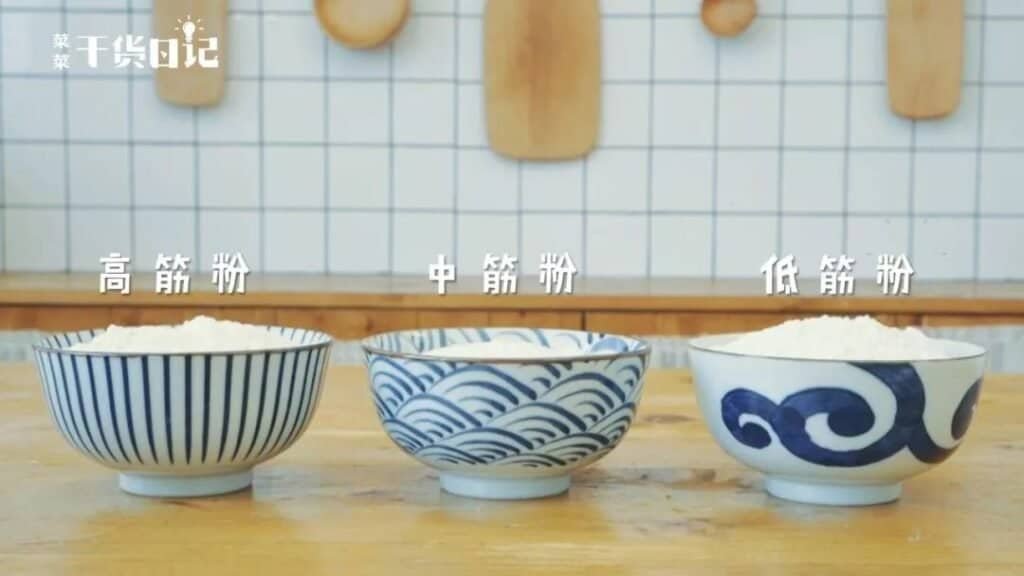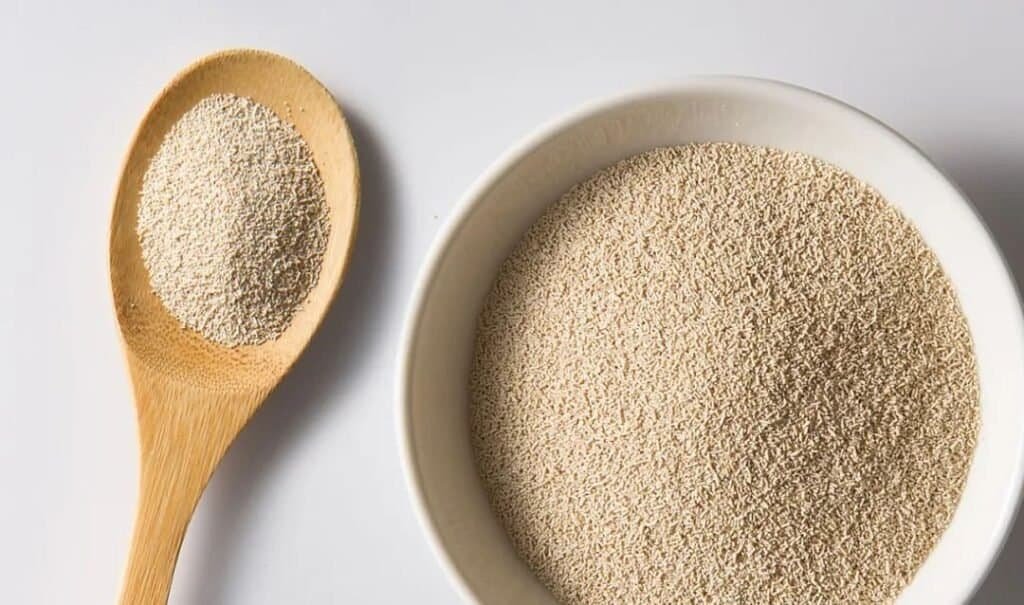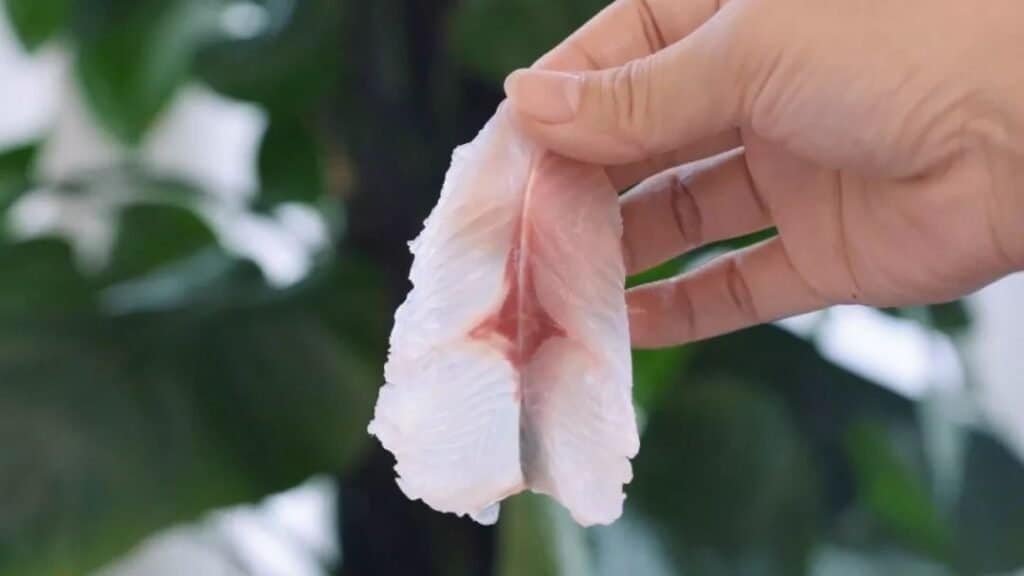As someone passionate about Chinese cooking, I’ve always found that preparing Sichuan Boiled Fish at home greatly affects how well the fish is sliced.
Today, I’m excited to share with you two practical methods for slicing fish, perfect for dishes like Suan Cai Yu (Sour Cabbage Fish) or Shui Zhu Yu (Sichuan Boiled Fish).

Method 1: Traditional Slicing Technique
1. Selecting the Fish: Grass Carp or Blackfish are ideal choices for their texture and ease of handling.

2. Cleaning: Thoroughly wash the fish, paying special attention to removing the black membrane in the belly.

3. Trimming: Snip off the fins.

4. Cutting into Segments: Slice the fish into sections – don’t worry about precision at this stage.

5. Deboning: With one hand, press down on a segment, and with the other hand, slice alongside the backbone, feeling for the bones and adjusting your angle accordingly. Practice makes perfect – don’t hesitate to practice on a few extra fish.

6. Removing the Bones: Slice the fish head in half, remove the fillets, and separate the remaining bones. If you enjoy eating fish with bones, this step can be skipped.

7. Final Slicing: Lay the fillet horizontally and slice from the tail to the head, aiming for a thickness of about 5-7 mm. Remember, the slicing direction is crucial – reversing it can result in broken pieces when cooked.

8. Marinating: Cut the fish bones into sections and mix them with the fish slices and head in a bowl. Add salt, cooking wine, and egg white, mix well, and let it sit for 20 minutes.
A key tip: Ensure the fish is dry before slicing. The knife technique should be precise, swift, and clean. Understanding the texture and grain of the fish is crucial to slicing it at the right angle, ensuring boneless, uniformly thick, and translucent slices.
Method 2: Alternate Slicing Technique
1. Preparation: Clean the descaled fish, remove the black membrane inside the belly, and cut off the fins. Then, remove the head.

2. Initial Slicing: Lay the fish flat. Press down on the body and slice the meat away from the bones horizontally.

3. Repeat: Do the same for the other side. The fish should look neatly filleted.

4. Final Slicing: Place the fillet skin-side down. Press down and slice the fish diagonally into pieces about 0.5 cm thick. Chop the fish steak into 5 cm long chunks and split the head in half.

5. Result: The sliced fish is now ready!

6. Marinating: Marinate the fish slices, steaks, and head separately with cooking wine, cornstarch, egg whites, and a pinch of salt for 15 minutes. These fillets are now ready to be transformed into a variety of dishes, including Suan Cai Yu and Shui Zhu Yu.

Key Tips for Slicing Fish:
- Selecting the Right Fish: Choose a firm-fleshed fish like Grass Carp, Blackfish, or Tilapia. These types of fish hold their shape well and have a texture suitable for boiling.
- Knife Preparation: Ensure your knife is extremely sharp. A dull knife will tear the fish’s flesh rather than slice it cleanly. A fillet knife or a very sharp chef’s knife is ideal.
- Fish Temperature: If possible, slightly chill the fish before slicing. Cooler fish flesh is firmer and easier to cut into neat, even slices.
- Removing the Skin: If your recipe calls for skinless fillets, carefully slide the knife between the skin and flesh. Angle the knife slightly towards the skin and use a gentle sawing motion.
- Cutting Angle: Slice the fish at a 45-degree angle. This angle allows for wider, thinner slices, which cook evenly and present well.
- Slice Thickness: Aim for a uniform thickness of about 5-7 millimeters. Consistent thickness ensures that all pieces cook at the same rate.
- Direction of Slicing: Always cut from the tail end towards the head. This approach respects the natural grain of the fish and results in slices that hold together better during cooking.
- Avoiding Bones: Feel for bones with your fingertips before slicing. If you encounter bones while slicing, adjust the angle of your knife to slice around them.
- Smooth Motion: Use a single, smooth slicing motion for each cut. Avoid sawing back and forth, as this can make the slices ragged.
- Handling the Fillets: Handle the fish gently to prevent the fillets from breaking. Use a spatula or your knife blade to transfer slices.
- Post-Slicing Treatment: After slicing, some recipes call for marinating the fish slices in a mixture of cornstarch, egg whites, and seasonings. This process, known as ‘velveting,’ creates a protective coating that keeps the fish moist and tender during cooking.
- Practice and Patience: If you’re new to filleting fish, practice is key. Start with less expensive fish to build your confidence and skills.
Remember, the goal is to create even, smooth slices that cook uniformly and look appealing when served. With patience and practice, you’ll master the art of slicing fish fillets perfectly for Sichuan Boiled Fish dishes.











